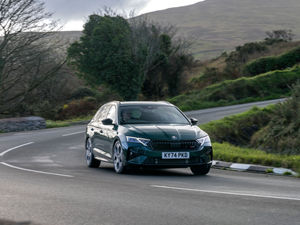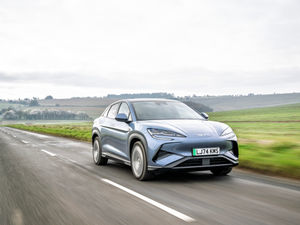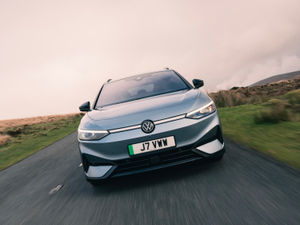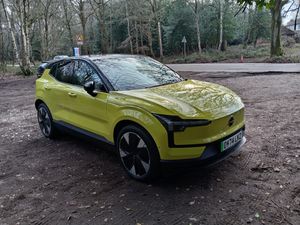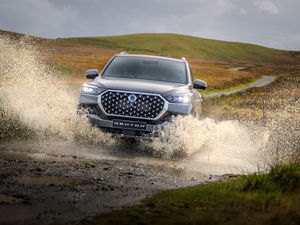First Drive: Audi's RS3 Saloon takes compact car performance to a whole new level
The Audi RS3 has been a hot hatch for some time, but now it’s been reimagined in saloon form. Jack Evans gets behind the wheel to see what it’s like
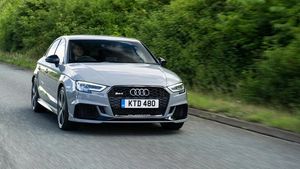
What is it?
The Audi RS3 is one of the most potent compact small cars available today.

Packing close to 400bhp and capable of hitting 60mph in under four seconds, there are few ways to go as fast for the money. Here, we’re testing the RS3 saloon on UK roads, having already driven the Sportback version.
What’s new?
The biggest changes reside under the RS3’s bonnet. Whereas downsizing has been rife in the hot-hatch segment, that hasn’t been the case here – the Audi uses a 2.5-litre turbocharged petrol engine with 395bhp and 480Nm of torque. It’s a hugely characterful engine, and sends power to all four wheels via a seven-speed automatic gearbox and Audi’s famous quattro all-wheel-drive system.

Inside, the RS3 saloon benefits from Audi’s latest interior architecture, including the much-praised Virtual Cockpit infotainment system. There’s a reason why it’s been so well-regarded – it’s a truly impressive media package, and one that takes very little time to get accustomed to.
What’s under the bonnet?
As we mentioned, the RS3 saloon makes use of a 2.5-litre turbocharged petrol engine with power going to all four wheels. Despite the high amount of performance, economy hasn’t been hit too hard – Audi claims that the RS3 will return 34mpg on the combined cycle and emit 188g/km CO2. Launch control has also been fitted, allowing you to extract the very best acceleration from the car in nearly all conditions.
Whereas the system is difficult to access in other cars, the Audi’s takes little finding – merely put the car into dynamic mode, disengage the traction control, plant one foot on the brake and the other on the throttle – release the brake and go. In practice, it’s a truly simple operation.
What’s it like to drive?
Driving the RS3 saloon makes you realise just how well-suited it is to the UK. There are huge amounts of traction to be found in nearly any gear, and its mid-corner balance dispels any reminders about previous generations of Audi RS cars and their understeer tendencies.

Then there’s the engine. Because of the sheer amount of torque available, you get huge amounts of acceleration from impressively low revs. This makes it both simple to keep up a steady driving rhythm, and also relaxing when travelling on the motorway. Here lies the other trick up the RS3’s sleeve – it’s remarkably well-mannered at all times. Even long stretches behind the wheel – usually a hot-hatches weakness – don’t prove too difficult, with the RS3 absorbing a good amount of the lumps and bumps in the road.
The steering doesn’t have a huge amount of feel but it’s accurate, and you can place the car pretty much exactly where you want it. Enter a bend, be level with the throttle and the RS3 saloon will corner without any fuss, slingshotting you out the other side as it transfers power between all four wheels for the best possible grip.
How does it look?
In saloon form, the RS3 looks pretty handsome – in our eyes, at least. The hatch – or Sportback, in Audi lingo – has long been the go-to layout for the RS3, but this latest four-door version edges it ever so slightly in appearance terms. Noticeable touches include a large quattro moniker located at the bottom of the grille, as well as RS3-specific sports suspension which drops the ride height by 25mm over the regular car.

At the rear, a pair of angry-looking sports exhaust pipes sit within a gloss black diffuser, while 19-inch alloy wheels house 370mm ventilated and perforated front brakes. It’s a mean looking package, but one that is more than backed up by performance.
What’s it like inside?
Step inside the RS3 and you’re immediately greeted by a solidly built interior. The flat-bottomed steering wheel features red stitching, and sits in front of a set of shift paddles – which unfortunately are only aluminium ‘look’, rather than the real deal. Then there’s the previously mentioned Virtual Cockpit infotainment system, which replaces the conventional dials inside the instrument binnacle. It can be used to display navigation, key vehicle readouts as well as speed and revs. It’s clear, easy to read and simple to navigate, too.

You also get a variety of aluminium inlays that help lift the overall look of the cabin, while sports seats provide plenty of support – and are heated, too.
What’s the spec like?
There’s a good amount of standard equipment to be found with the RS3 saloon – but then you’d hope so, given the car’s considerable £43,765 base price. Key equipment includes Audi’s virtual cockpit system, dual-zone climate control and full LED headlights. However, our test car came with optional extras such as full sports exhaust system (£1,000), Bang and Olufsen sound system (£495) and a matrix LED package (£895).

We would thoroughly recommend the latter, as it provides a huge amount of visibility in even the murkiest of conditions. All in, our test car came out at £55,335 which, for a compact sports saloon, is really quite a lot.
Verdict
The RS3 Saloon is a hugely capable car and, in four-door form, looks the absolute business too. We’d recommend being cautious with the options list, as even a small smattering of ticked boxes can very quickly ramp up the car’s price. Go easy on these, however, and the RS3 saloon represents excellent value for money given the huge amount of performance on tap.
FACTS AT A GLANCE
Model as tested: Audi RS3 saloon
Price: £45,250
Engine: 2.5-litre turbocharged petrol
Power: 395bhp
Torque: 480Nm
Max speed: 155mph
0-60mph: 3.8seconds
MPG: 34
Emissions: 188g/km

